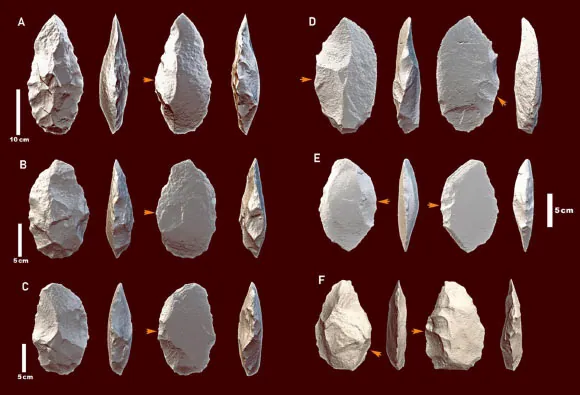
Unveiling the Minds of Early Hominins: New Insights into Tool-Making Decision Processes
2025-01-15
Author: Sarah
Introduction
Recent research by paleoanthropologists has shed light on the decision-making processes of Early Pleistocene tool-makers at an Acheulian site in the Ethiopian Highlands, dating back between 1.6 and 1 million years ago. This groundbreaking study delves into how our ancient ancestors selected and utilized raw stone materials, revealing a complex understanding of technology and environmental adaptation.
The Research Team
The research team, led by Professor Erella Hovers from the Hebrew University of Jerusalem, emphasizes the significance of the Oldowan and Acheulian tool complexes, which are believed to have emerged within the East African Rift Valley.
Oldowan and Acheulian Tools
The Oldowan tools, originating around 2.6 million years ago, marked a pivotal technological advance, characterized by the use of various lithic supports—such as cobbles and pebbles—for percussive techniques to create simple glass-like flakes. In contrast, the Acheulian tools, emerging approximately 1.75 million years ago, indicate substantial shifts not only in tool technology but also in the biological and behavioral aspects of hominin life.
The Melka Wakena Site
The study specifically focuses on the Melka Wakena site, an early Acheulian site-complex located in the high-altitude regions of south-central Ethiopia, approximately 2,300–2,350 meters above sea level. This site presents a unique window into early human adaptation to challenging environments, as preliminary investigations have unveiled faunal remains, including a variety of large vertebrates—many with signs of butchery by early hominins.
Strategic Decision-Making
The researchers highlight how early hominins demonstrated strategic decision-making abilities when selecting stone materials. According to Hovers and her colleagues, “Melka Wakena’s unique high altitude setting offers valuable insights into how early humans were not just randomly picking up stones; they made complex decisions based on factors such as rock suitability, durability, and efficiency.”
Advanced Digital Imaging Techniques
By employing advanced digital imaging techniques, including 3D scanning and photogrammetry, the team created intricate models that illustrate the wear patterns and surface changes on these ancient tools. Such analyses revealed that the properties of the raw materials significantly influenced the tools' wear, which was consistent even under similar usage conditions. These findings point to a remarkable level of foresight and cognitive complexity in early hominins, highlighting their ability to assess and predict the effectiveness of materials in tool-making.
Conclusion
Professor Hovers states that this research underscores the sophistication of early human cognitive processes, indicating that “early humans were adept planners, capable of considering the long-term implications of their material choices.” This exciting research, which provides a new perspective on the cognitive abilities of our ancestors, is featured in the journal PLoS ONE, offering vital contributions to our understanding of human evolution and adaptability. As we uncover more about the lives of early hominins, we gain invaluable insights into the roots of human innovation and survival.
 Brasil (PT)
Brasil (PT)
 Canada (EN)
Canada (EN)
 Chile (ES)
Chile (ES)
 Česko (CS)
Česko (CS)
 대한민국 (KO)
대한민국 (KO)
 España (ES)
España (ES)
 France (FR)
France (FR)
 Hong Kong (EN)
Hong Kong (EN)
 Italia (IT)
Italia (IT)
 日本 (JA)
日本 (JA)
 Magyarország (HU)
Magyarország (HU)
 Norge (NO)
Norge (NO)
 Polska (PL)
Polska (PL)
 Schweiz (DE)
Schweiz (DE)
 Singapore (EN)
Singapore (EN)
 Sverige (SV)
Sverige (SV)
 Suomi (FI)
Suomi (FI)
 Türkiye (TR)
Türkiye (TR)
 الإمارات العربية المتحدة (AR)
الإمارات العربية المتحدة (AR)